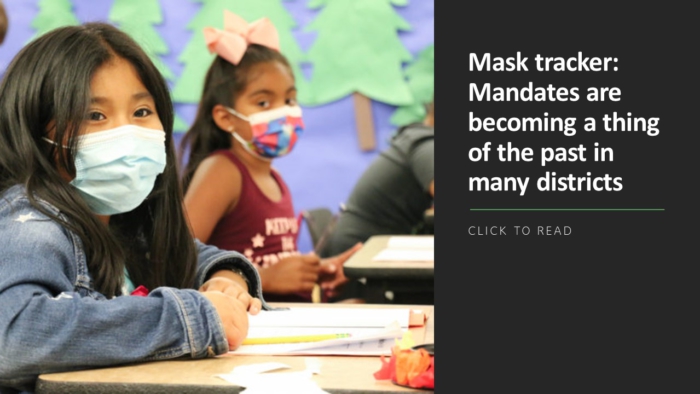Experts are urging superintendents and other education leaders to act quickly to prevent COVID-era stress from driving high school principals from their jobs.
The number of high school principals who’ve considered leaving their jobs has skyrocketed during the pandemic as new responsibilities have piled up and controversies have erupted over mask mandates, critical race theory and other issues. More than a quarter of principals reported “constant” job-related stress, according to the latest report from the RAND Corporation, which also warned:
- Four out of five secondary principals experienced frequent job-related stress during the 2020-2021 school year.
- Principals of color, female principals, principals serving high-poverty schools, and principals serving schools with high enrollment of students of color were especially likely to suffer stress.
- Supporting teachers’ well-being and students’ social-emotional learning, and navigating pandemic-related challenges were the top stressors.
- Principals whose schools provided fully remote instruction were more likely to experience constant stress than principals whose schools were hybrid or in-person.
A leading principals organization warned in December that historically low job satisfaction among secondary school principals could trigger a “mass exodus” of building leaders in the coming years. By the end of 2021, job satisfaction had fallen to an “ultimate low” with almost four in 10 principals saying they were likely to quit in the next three years, according to a National Association of Secondary School Principals’ survey that gauged the impacts of COVID, the polarized political climate and resource needs.
More than one-third of principals who responded to that survey say they’d been threatened over COVID safety precautions they’ve taken.
Principals suffer a stress gap
Education has, throughout the pandemic, been a more stressful profession than many others. Twice as many principals experienced frequent stress than did other U.S. workers, the RAND study reports. Teachers were also more likely to suffer from stress than was the average adult. And about one in six principals reporting having difficulty coping with job-related stress.
Principals of high-poverty schools and schools with high enrollment of students of color were also more likely to report “constant” stress. The RAND researchers cited school context as a potential cause of the stress gap.
More from DA: How to stop this wave of bad behavior from becoming the new normal
“Female principals and principals of color are generally more likely to lead schools that are urban and schools in which 75 percent or more of the student population is experiencing poverty,” the researchers said. “Additionally, female principals, principals of color, principals leading high-poverty schools, and principals serving schools with high enrollment of students of color were all more likely than their counterparts to provide fully remote instruction in the 2020-2021 school year.”
Most of the principals polled in December by NASSP said they were content with their salary and benefits but fewer than three in 10 said they had adequate resources—including teaching materials and other supplies—to support students. And only about the same number felt district leaders had listened to their ideas about how to spend COVID-relief funding at their school.
To ease stress, the RAND study recommends superintendents and their teams:
- Support the well-being and mental health of principals: District leaders should gather data on the specific stressors and implement culturally responsive mentorship and coaching, particularly for novice principals.
- Help principals support and improve teachers’ and students’ well-being: District leaders should give principals the resources and autonomy to address the concerns of teachers and students, such as by hiring more counseling and mental health staff. Leaders should also consider hiring such staff to support principals.
- Provide guidance and resources to help principals manage the operational aspects of their jobs: District leaders can adopt CDC school safety guidelines and allocate American Rescue Plan funding to implement those measures districtwide, thus relieving principals of the need to navigate these decisions for their school. And in instances where in-person learning is not possible, district leaders should make high-quality virtual learning options available and smooth transitions between in-person and remote schooling.









